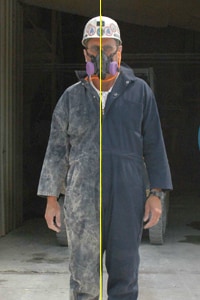Mining Product: Infographics: Helping Mines Control Respirable Silica Dust
Original creation date: October 2017
Authors: EJ Haas, AB Cecala, NM Ortiz, J Patts
Pittsburgh, PA: U.S. Department of Health and Human Services, Public Health Service, Centers for Disease Control and Prevention, National Institute for Occupational Safety and Health
Exposure to respirable silica dust can be hazardous, and over time, it can lead to lung disease. However, there are simple, quick-fix measures you can take now to reduce your exposure. This set of dust exposure infographics presents four methods to work safer around silica dust.
The individual PDFs are available via the links below, or you can use the link in the Reference section to download the set in a ZIP file.
- Clean dust from work clothes
- Cover or replace cloth seats
- Tying bulk or mini-bags
- Spraying or hosing cleanup
For the same PDF publications in Spanish, please use the following links:

Pittsburgh, PA: U.S. Department of Health and Human Services, Public Health Service, Centers for Disease Control and Prevention, National Institute for Occupational Safety and Health
- Control of Respirable Dust
- Dust Suppression Hopper Reduces Dust Liberation During Bulk Loading: Two Case Studies
- Emerging Respirable Dust Sensing and Control for M/NM Mining
- Evaluation of Engineering Controls at Bagging Operations to Reduce Exposures to Respirable Crystalline Silica Dust
- Field Assessment of Control Techniques and Long-Term Dust Variability for Surface Coal Mine Rock Drills and Bulldozers
- Improving Silica Dust Control Through Targeted Research
- Improving Silica Dust Controls for Metal/Nonmetal Mining Operations in the United States
- Improving the Performance of Fan-Powered Dust Collectors in Stone-Cutting Applications
- Methods to Lower the Dust Exposure of Bag Machine Operators and Bag Stackers
- Respirable Dust